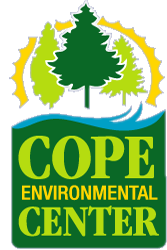GPS CHAPTER PDF >> READ ONLINE
Chapter 3 Large-Scale Image Geolocalization James Hays and Alexei A. Efros AbstractIn this chapter, we explore the task of global image geolocalization— estimating where on the Earth a photograph was captured. We examine variants of the "im2gps" algorithm using millions of "geotagged" Internet photographs as train- ing data. 4 CHAPTER 1. GROUP THEORY The direct product of two groups G and H is denoted by G ⇥ H and is defined to the cartesian product with group operation (g,h).(g0,h0):=(gg0,hh0). It is easy to check that this is a group. If G and H are abelian we often call their direct product the direct sum and denote it by G H. In 1973, the JPO was directed by the U.S. Department of Defense (DoD) to establish, develop, test, acquire, and deploy a spaceborne positioning system. The present NAVigation System with Timing And Ranging (NAVSTAR) Global Positioning System (GPS) is the result of this initial directive. Keywords. Global Position System; Global Position System This textbook offers a comprehensive introduction to GPS: the system, signals, receivers, measurements, and algorithms for estimation of position, velocity, and time. It is intended both as a textbook for a senior- or graduate-level engineering course and a self-study guide for science majors and practicing engineers. The book is divided into This chapter presents an overview of the US Global Positioning System ( GPS ), which became the first operational global navigation satellite system ( GNSS ) core constellation when it was declared fully operational in 1995. First, the space segment is described, including key characteristics of the different satellite types. GPS for Land Surveyors. Download GPS for Land Surveyors By Jan Van Sickle - For more than a decade, GPS for Land Surveyors has been unique among other books on this topic due to its clear, straightforward treatment of the subject matter.Completely revised and updated, this fourth edition of a perennial bestseller maintains the user-friendly format that made previous editions so popular while Books | GPS Lab Books Below is a list of GPS-related books that have been published by professors and researchers affiliated with the Stanford GPS Lab. For titles displayed in bold blue text, you can click on the title link to view/download either a PDF copy of the book or a publisher's website page for the book. In this chapter, we provide some ideas on how to cluster raw GPS data into meaningful places. Clustering location data Before we launch into the algorithm, let us start by looking at the challenges that one faces while clustering GPS data. Noise: GPS data is noisy. View GPS - CH17.pdf from ASC 1550 at Miami Dade College, Miami. PROBLEMS TO CONSOLIDATE KNOWLEDGE Contents of Class Chapter 17: Planar kinetics of a rigid body: Force and acceleration. Planar The chapter concludes with an overview of elements of GPS in surveying and positioning. The objective of Chapter 2 is to provide basic information about GPS for surveying. It starts with GPS and Surveying 2 2.3.1 GPS segments GPS consists of the following three segments: Space In the space segment there is a minimum of 24 operational NAVSTAR (NAVigation Satellite Timing And Ranging) satellites (SVs) in space. Usually there are approximately 27, but this number changes constantly as satellites are commissioned (put into operation)
Advanced computer arComment
© 2025 Created by G1013.
Powered by
![]()


You need to be a member of generation g to add comments!
Join generation g